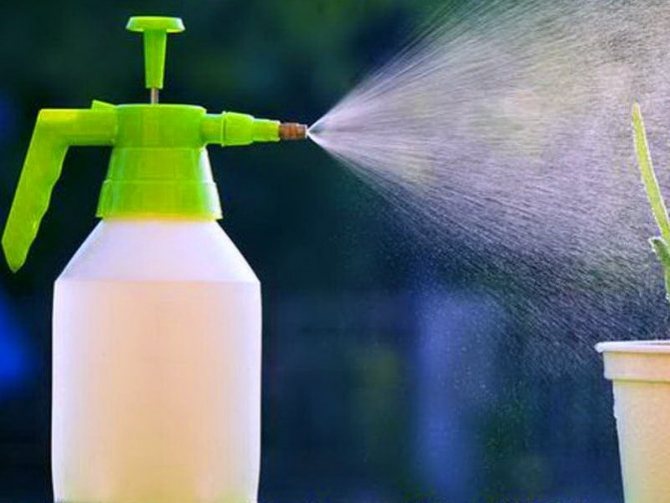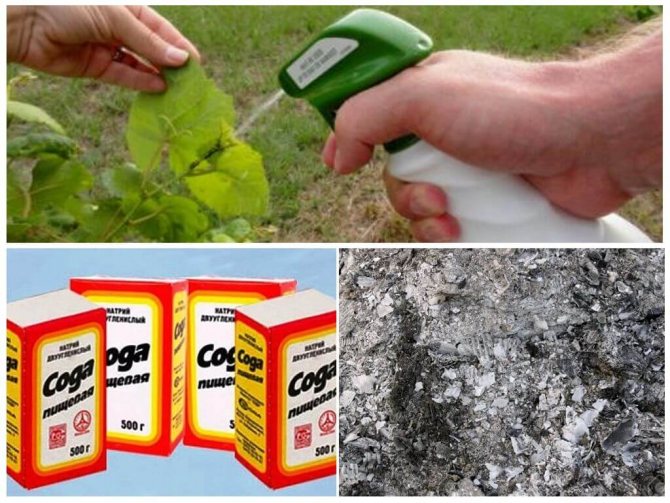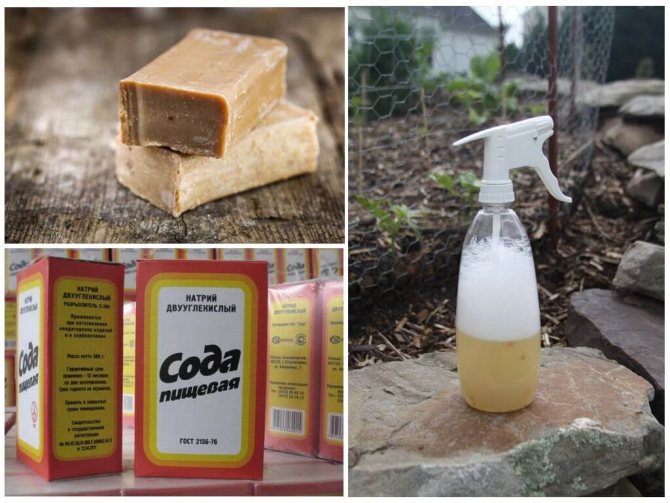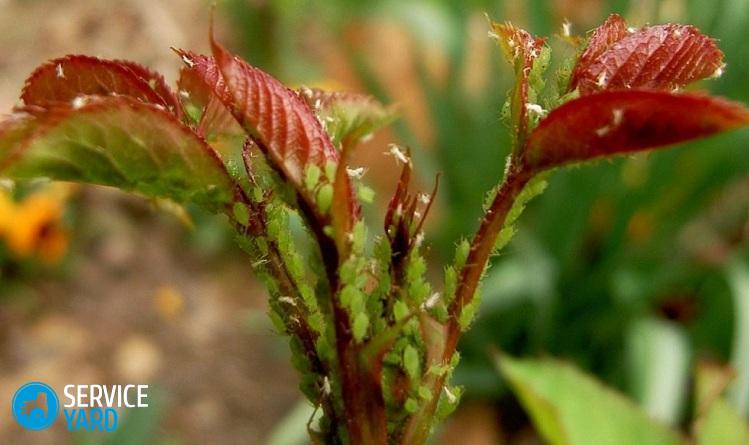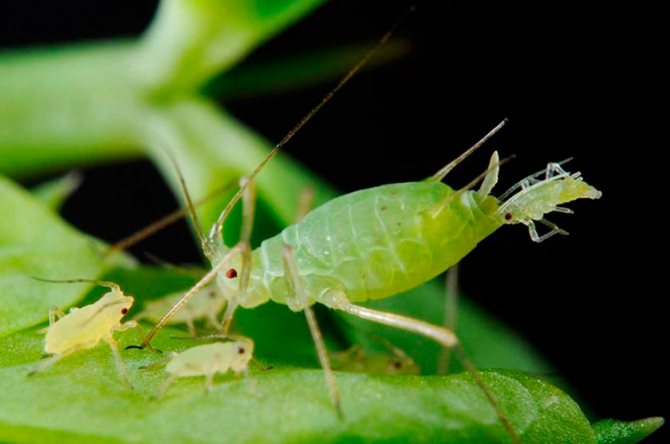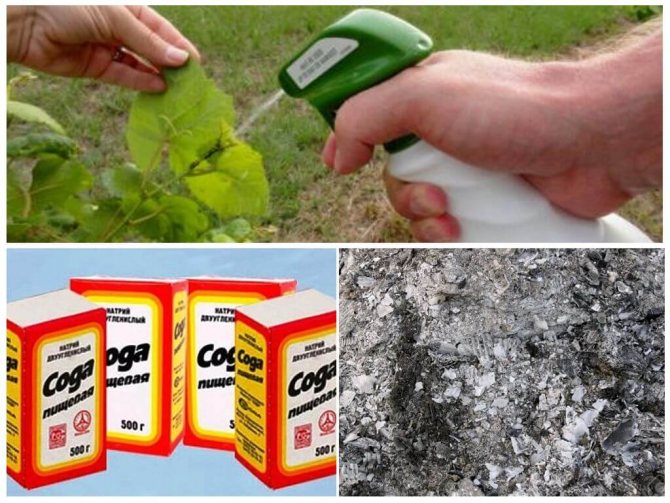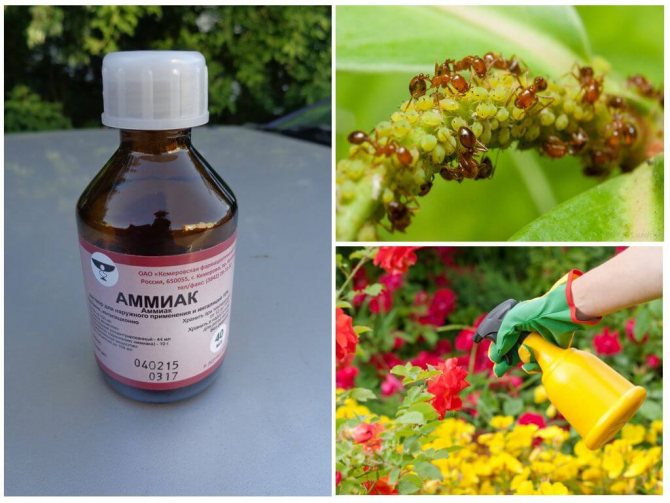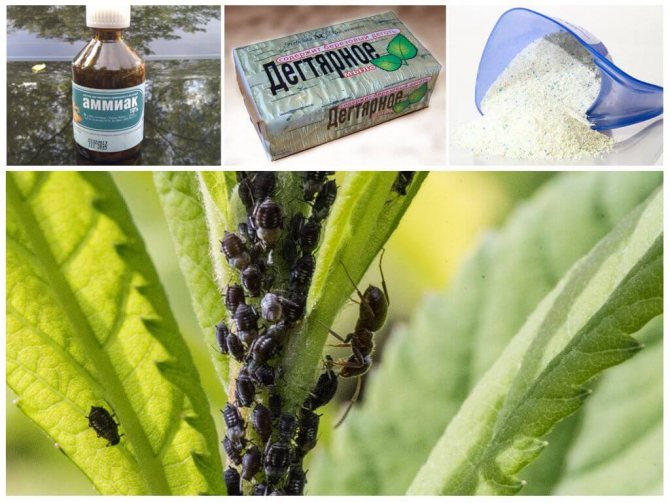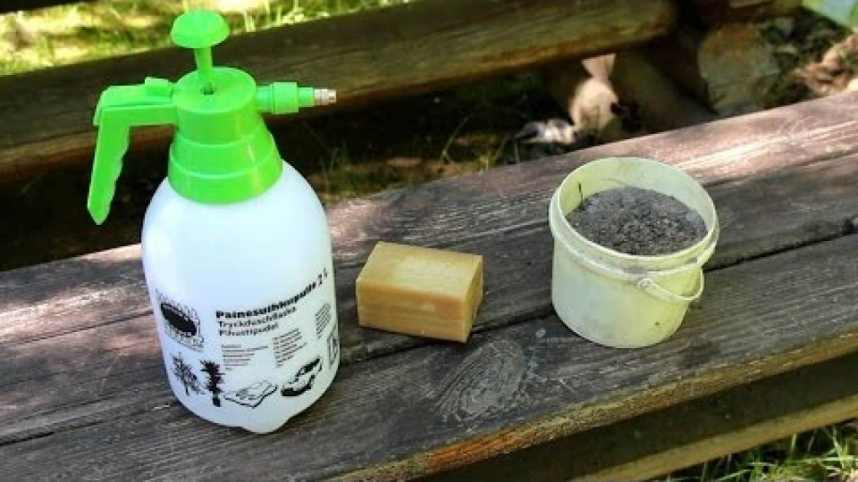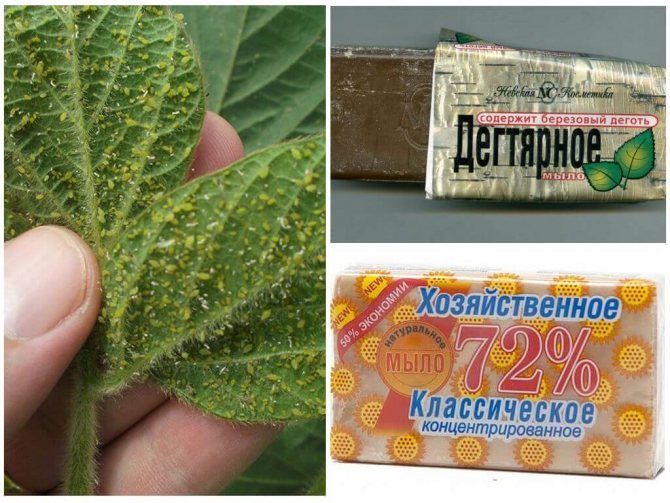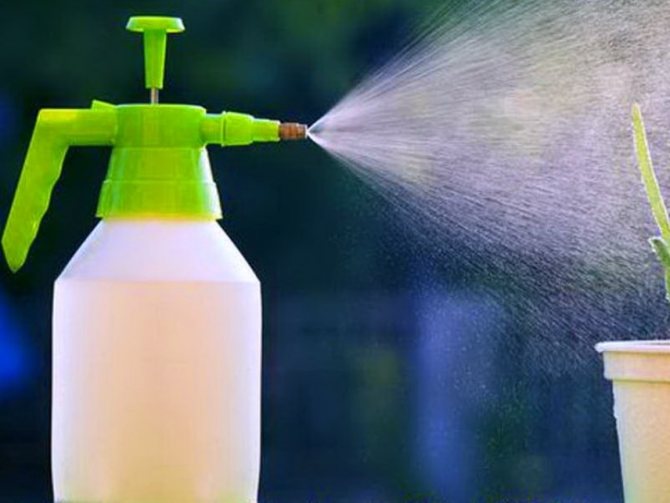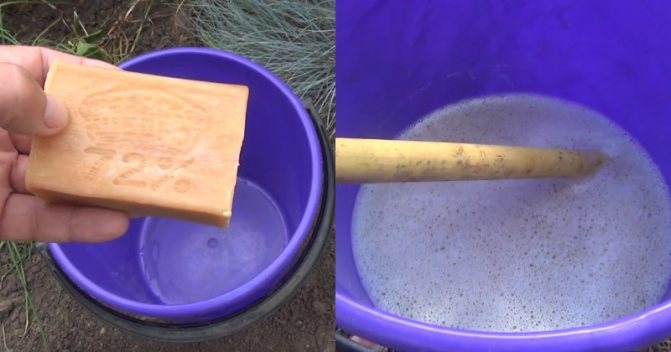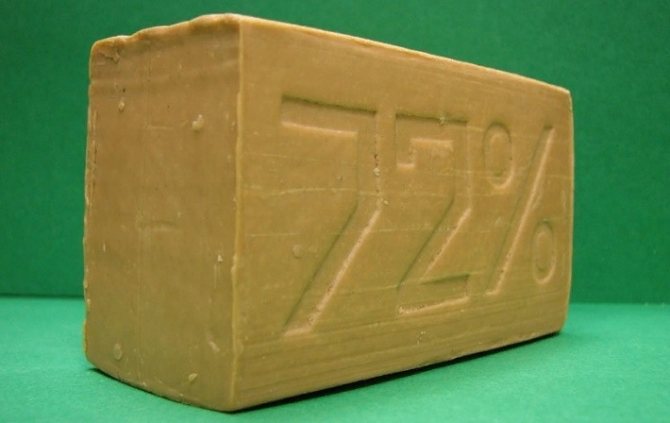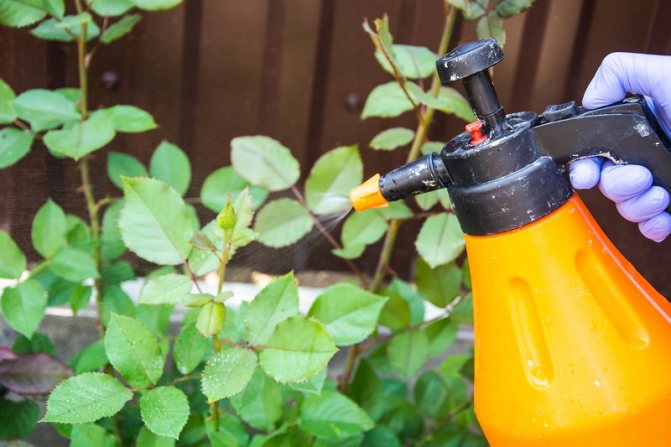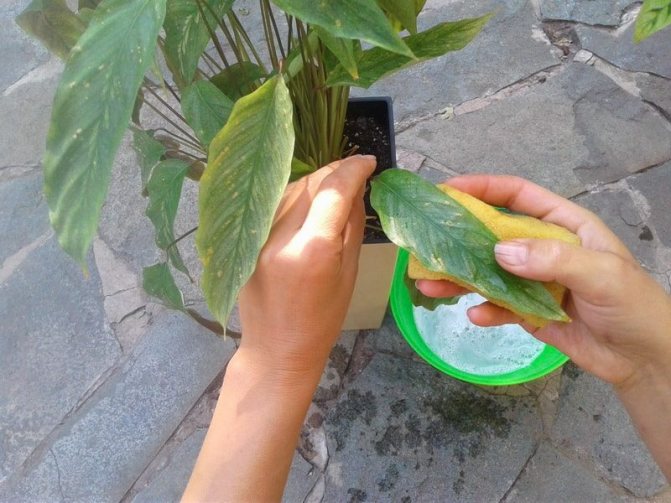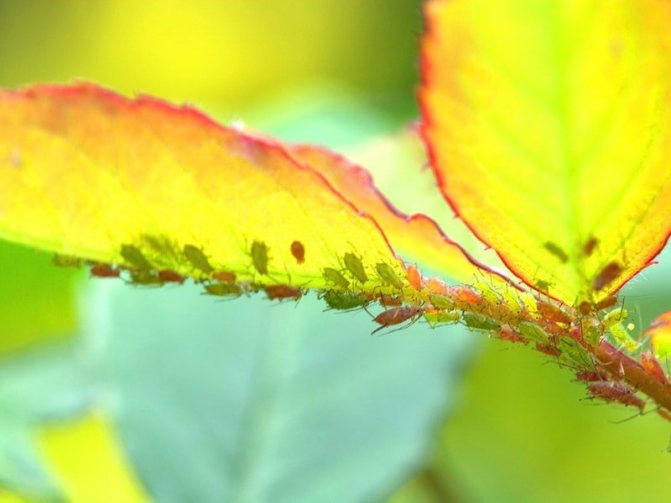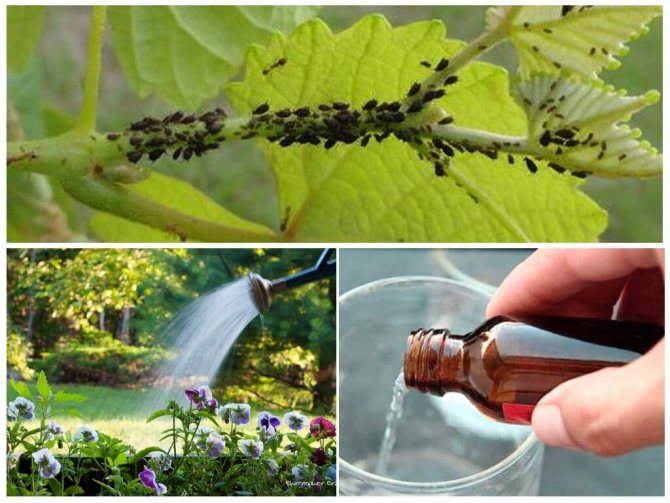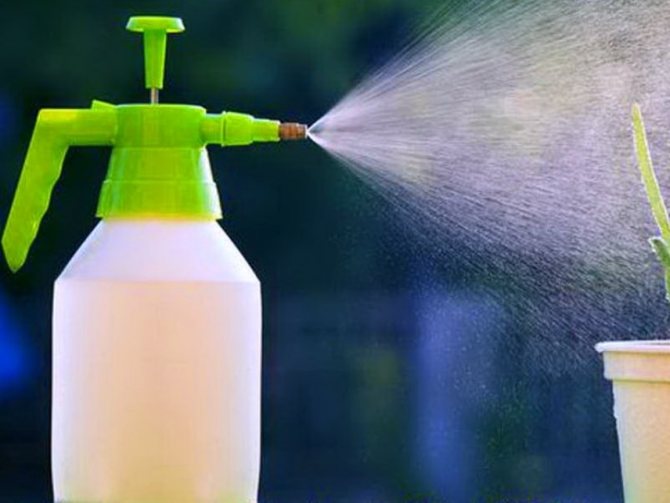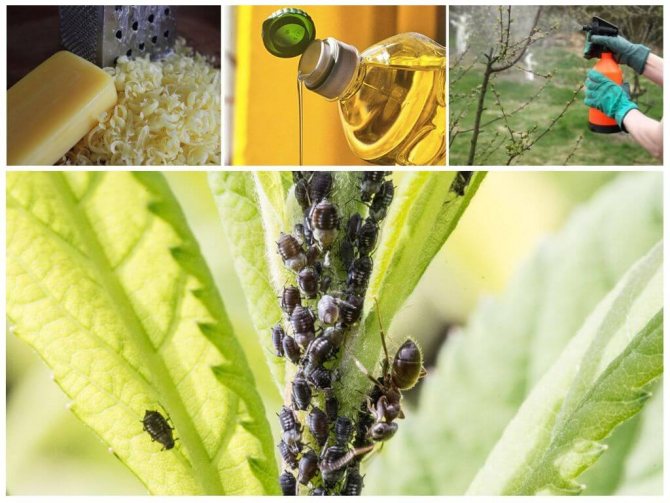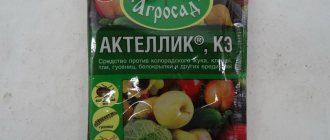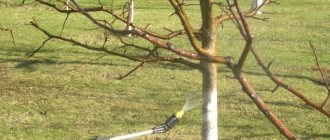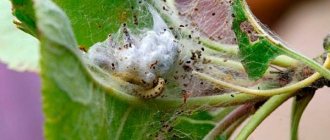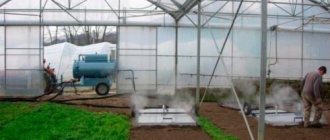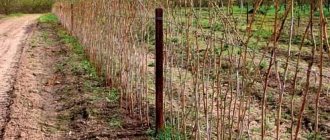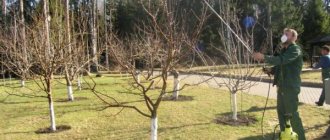Tags: vegetable garden without chemicals
ECOgardener
September 10, 2020 at 09:47 PM
Do you use a soap solution for aphids and many other plant pests and diseases? If not, then in vain. Indeed, working in the country and communicating with our colleagues, we increasingly observe an interesting trend - old, sometimes forgotten methods in gardening, used by our grandmothers-great-grandmothers, are again in demand. One of these technologies is the use of laundry soap in the garden and vegetable garden to combat diseases and pests.
Briefly about the activity of aphids
All summer residents and gardeners constantly work with their plants so that they do not get sick and give good fruits and remain beautiful. Aphids start their activity in March, mainly young plants are attacked. Aphids breed on everything from common weeds to garden queens - roses. Aphids propagate from the bottom of the leaves and often occupy the entire surface of only grown plants. Next, you will learn how to get rid of this insect and prepare the right solution for aphids.
Wood ash
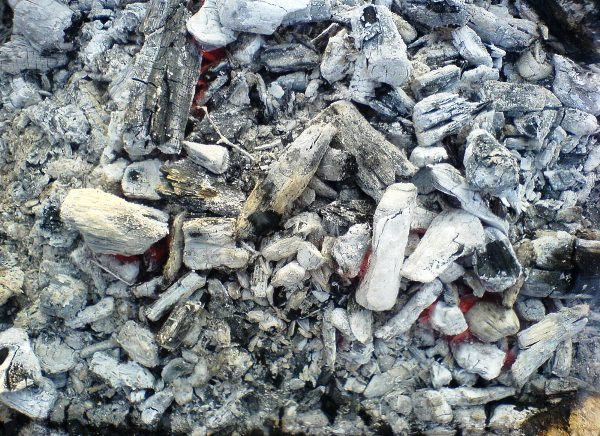
Everyone knows that ash is used as a good fertilizer for soil fertility. When cooked correctly, ash turns into a good means of fighting aphids, as well as a number of other insects. Ash can be used in different forms.
For example, a solution is prepared as follows. The sifted ash must be boiled in 300 ml of water, thereby you get an ash solution from aphids. After that, strain it and stir it in a bucket of water. Ash helps especially well with the appearance of aphids on trees!
First, shower them and wet the leaves, and then "powder" them. In addition, ash fertilization in itself is an excellent preventive measure. Due to its high potassium content, ash eliminates excess nitrogen in the soil, destroying the environment for aphids to live and reproduce.
Wireworm
Does not tolerate the smell of birch resin agile
who just strives to taste the tubers
, carrot roots,
, radishes, flower tubers and bulbs and other underground treats.
Wireworm larva
To protect potatoes from this pest, seed tubers are soaked for 40-50 minutes before planting in a solution prepared from 2 teaspoons of tar and 10 liters of water. Plants grown from seeds are watered with such a solution under the root 3-4 times per season with an interval of 2-3 weeks to protect against wireworms.
Prevention of fungal diseases
With the help of laundry soap, you can resist fungal diseases. The solution allows you to fight gray mold (Botrytis cinerea), which most often affects strawberries, cabbage, onions, cherries, peppers and other crops. At the initial stage, you can find a slight gray coating. Soon it begins to actively spread, all parts of the plants become lethargic, rot and fall off. You can save plantings from this ailment by treating with a soap-based solution. Grate half of the bar and mix the shavings in 10 liters of water. To enhance the effect of the composition, it can be supplemented with tansy or garlic extract. Treat every 2 weeks. A total of 3 such procedures will be required.
Loading ...
Aphid solution: aphids carry diseases
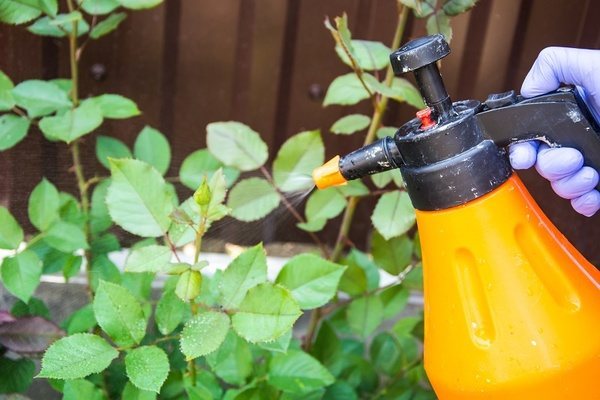

Aphids are indeed a very dangerous pest, they can carry many diseases and viruses that negatively affect the life and growth of plants. If the aphid has brought the virus to the plant, hard growths will begin to form on its leaves. Aphid larvae carry ants from their homes to trees. The soapy solution will help you fight both ants and aphids.
Spider mite
Will not resist the strong aroma of birch resin and
which is especially active in hot dry weather. This pest is tiny in size, but it does huge damage to garden and vegetable garden crops.
Spider mite
At the first sign of tick activity, treat the plants with a solution prepared from 10 liters of water, 3 tbsp. tar and 1/3 bar of soap, paying special attention to the back of the leaves.
How to prevent an aphid attack
If you start a fight a short time after the attack of insects, it will not be difficult to overcome. Trees and plants will need the first treatment in mid-spring when leaves begin to form. Soap dissolved in water will help prevent ants from crawling onto the plant, and it is they, in most cases, that carry the pest. Correct and timely processing will contribute to the life of the plant.
So, the first processing is done in the middle of spring. Aphids attack and love not only fruit-bearing trees, but also, for example, cucumbers. In the spring, cabbage may be attacked. If the soapy water with which the plant has been sprayed stops helping, you can purchase a special protection - a collar. It is put on the stem / trunk of the tree and prevents the ant from crawling to the leaves.
The most important factors for a quick solution to the problem
When feeding on plant sap, aphids pierce its skin with its proboscis. Old leaves, due to their rigidity, are beyond her power, therefore the most delicate young leaves and buds prevail in the "menu" of the pest.
Therefore, it can be argued that the most attractive parts of the plant for him are the young parts, namely, the tops of the shrubs and the underside of the leaves.
Aphids on roses are carried by ants. Famous for their hard work and vigor, insects in an extremely short time can disfigure currant leaves and sprinkle delicate and fragrant buds with parasites.
The spread of the pest by ants is due to the fact that the latter need its sweet syrup. It is this factor that is the reason for the “delivery” of more and more “Sokopians” to young leaves.
Moreover, insects not only "supply" the destroyer to green spaces, but also do their best to protect it from all kinds of enemies. The range of tasks of the owner of the site includes the task of eliminating the access of insects to aphids.
Efficiency issue
The secret of the action of soap from aphids is hidden in the gluing of insects to each other, the formation of a protective film on the leaves. Insects are limited in movement, the protective shell does not allow them to fully feed.
We suggest you read: Ointments for itching from insect bites for children and adults
Soap formulated with other active ingredients enhances their effectiveness. If there is no time for spraying, leaves, twigs can simply be soaped.
The preparation contains the following ingredients:
- Birch tar. Natural antiseptic. Helps destroy pathogens and fungi. This smell is not tolerated by any insects and die from the effects of tar.
- Sodium salts. Normalizes the moisture balance of the skin, helps in the treatment of dermatitis.
- Phenol, cresol, acids and alkali. They "burn out" parasites and do not give them any chance of survival.
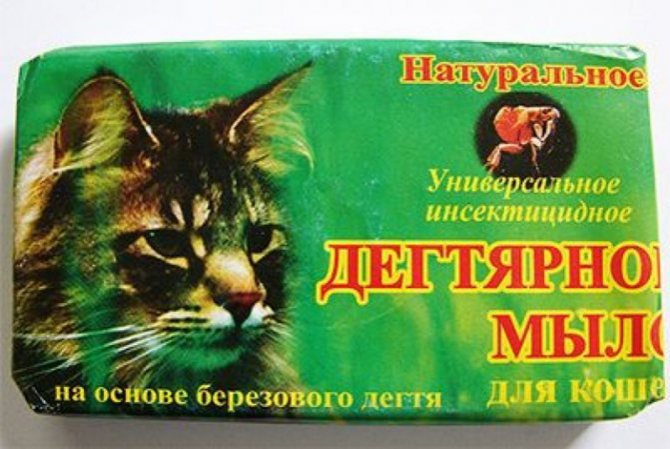

The content of birch tar in soap is no more than 10%. Even through the packaging, you can hear the pungent smell of soap. The scent of tar is safe for humans.
Additional properties and distinctive features of the tar preparation:
- Brown color;
- dries hair and wool;
- helps with seborrhea and scabies soothe itching and relieve inflammation;
- has a wound healing and antibacterial effect;
- foams poorly;
- relieves itching after an insect bite.
The low price determines the popularity of the drug, and one piece is enough for several bathing of a medium-sized animal. This product can be used as an alternative to expensive synthetic insecticides. If the animal has too many parasites, you can use special preparations against fleas together with soap.
Coca Cola
Coca-Cola is a carbonated drink which contains orthophosphoric acid, are increasingly beginning to be used for other purposes: from scale, rust, ingrained dirt, blood, and now also against various insects, including aphids.
Exactly the presence of acid in the drink is so "disliked" by pests... Phosphorus is generally extremely useful in the destruction of most garden insects - it is part of many pesticides and insecticides.
Coca Cola for aphids acts quickly and has a long lasting effect: after the destruction of aphids by Coca-Cola, the pest is unlikely to return.
The duration of use of Coca-Cola depends on observations, but usually 1-2 weeks of spraying is enough to completely get rid of aphids, the effect appears immediately after the first use.
There are several recipes for preparing a solution against aphids.:
- 5: 1 coca cola and water... A very concentrated mixture, used on a large number of damaged plants.
- 1:1... Less concentrated, but more commonly used blend.
- 2 L of Coca-Cola in 7 L of water (small bucket)... Such a solution is suitable when aphids are just beginning to appear on the leaves. In this case, it is important not to miss the moment and carefully examine the inside of the leaves, where the aphid lays the larvae.
Do not use undiluted Coca-Cola, otherwise all kinds of insects will flock to the smell of caramel and sugar, and there will be no effect other than the time spent.
The bushes of garden plants are sprayed with this solution.without touching the inflorescences. Coca-Cola is not dangerous to humans, unless it is often taken internally.
See how Coca Cola works against aphids in the next video.
Aphid solution: home methods


When dealing with insects at home, you will need to devote much more time and energy to the process than when using chemicals. When using insecticides, the plants will get rid of insects + will be protected for the whole summer. Home methods are certainly less dangerous for both humans and plants, but they cannot exterminate the insect population, only scare away. Usually folk remedies are used once a week, repeating three times. There is a chance that the procedure will have to be repeated.
Mealybug
It is a sucking insect covered with a white waxy coating. It got its name from its characteristic white discharge, similar to cotton wool. The size of the insect, depending on the species, varies from 0.5 to 12 mm. The mealybug has well developed sexual dimorphism.


Males have wings and well-developed limbs; tail processes are visible on the abdomen. Due to the fact that adult males do not feed, they have no mouth.
The females of most species lay eggs, but some species are viviparous. The eggs are placed in white cocoons made of wax threads. Fertility is very high - some females are capable of producing up to 4 generations per year.
The larvae of the first instar are able to actively move around the plant, but after sucking, they lose their mobility. The ability to move is restored after molting.
Worms harm the plant by sucking its juices. Because of this, the growth of the plant stops, and then its death occurs.
Signs of defeat
The presence of a mealybug is easily recognized by the presence of a waxy, cotton-like bloom on the plant. Another symptom may be a special sugary discharge and a fungus settling on them.
Control measures
With a mild form of damage, it is enough to clean the plant of insects and their wax secretions with a soft brush and soap solution. Then the flower is sprayed with an infusion of garlic, a solution of green soap or a decoction of cyclamen. The spraying procedure must be carried out 3 times every 7 days. A good effect can be obtained by treating the plant with an alcoholic tincture of calendula or ordinary alcohol.
If the damage is serious enough, then in addition to mechanical impact on the pest, that is, manual collection, the plant will need to be sprayed with solutions of the following chemicals: Aktara, Fitoverm, Calypso, Confidor, Tanrek.
You can protect yourself from mealybugs if you regularly arrange water procedures for the plants. This pest hates moisture and prefers dry places.
What to choose
How to properly prepare the same soap solution. Any soap film will create conditions in which insects simply cannot feed. Thus, they will either die or migrate. It is important to choose the right soap if there is only soap and water in the solution. Antiseptic types and with a disinfection effect are best suited.
Laundry soap
Laundry soap - everyone knows, it's cheap, when it gets directly on the pest, it dies.
Green soap Green - can be found in garden stores, has a gel-like form, in fact it is an insecticide.
Tar soap
Tar soap - very powerful and, most importantly, effective.
Toilet soap
That decorative soap, which is very often used by us in everyday life, is not suitable for fighting insects. In these types of soaps, dye and various fragrances are used, they can harm the plant, and not just pests. After rain or watering, harmful substances will enter the soil, then into the plant. It will not reflect well on you and the plant.
Toilet soap
A delicate pink or light blue bar of soap that smells great is the worst option. Firstly, its cost is quite high. Secondly, all the flavors and colors that are used in its composition are not at all useful for your plants. Moreover, after the rain, all this will fall into the soil, and then it will be absorbed by the roots of the plants. As a result, you harm yourself even more than using modern insecticides.
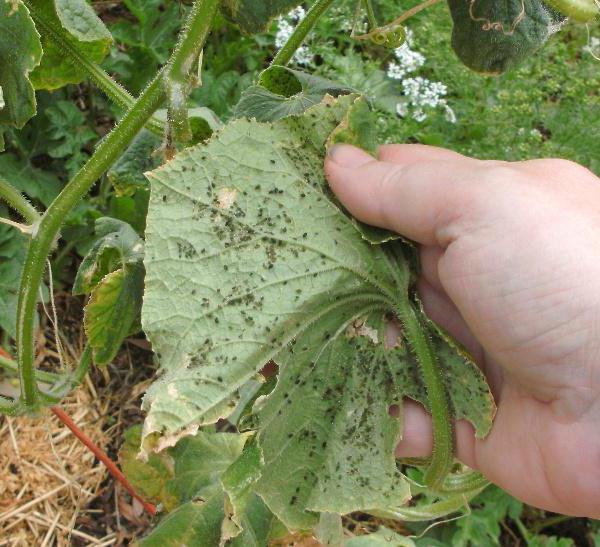

Composition and principle of action
The active ingredients of the preparation are animal fats, various vegetable oils, water and potassium salts. Green soap can be used alone or as an excipient for pesticides.
The product is distinguished by the absence of preservatives. It does not have a detrimental effect on humans and the environment. Green soap has other benefits as well:
But we are far from avoiding pesticides because they can seriously damage our health. Instead, here are some tips that a garden or balcony is doing well and is 100% organic. The most effective fight against aphids and other pests is a soap that safely gets rid of all unwanted guests. Use it no more than once a month and only for ornamental plants. We do not recommend it for fruits and vegetables, and if you want to use it, just select an environmentally degradable brand and wash the plant the next day with water.
- completely decomposes to simple components, without polluting the soil and water bodies;
- suitable for most plants;
- increases endurance to adverse weather conditions.
The soap solution does not harm beneficial insects, fish and algae. Spraying can be carried out near water bodies. The drug has a wide range of applications.It is used for cleaning surfaces in everyday life, in veterinary medicine, and in industrial production.
Soap, oil, and vinegar are mixed in hot water, which brings all the ingredients together. Pour the emulsion into a spray bottle and apply it to the affected plants. That our smells don't smell like difficult insects. Try this simple sprinkle with rosemary, or use another aromatic herb from your garden, like mint, lavender, or sage. If you don't have fresh herbs, try replacing them with a few drops of essential oils.
Toss the herbs in hot water for half an hour and you have such a strong herbal tea. After cooling, refrigerate and add soap if necessary. Pour into a spray bottle and use it. This UV spray comes without soap. Add hot water and let it sit for half an hour. After cooling, drain the infusion and apply a spray bottle to the plants where needed. Beetles and other pests already have an arc with your garden.
Green soap is effective against:
After spraying, a film forms on the plant. It prevents insects from breathing and prevents the development of clutches of eggs and larvae. It can be used to combat sucking pests.
Soap itself is not a pesticide and is most effective as a prophylactic agent. It is used in the early stages of the spread of disease.
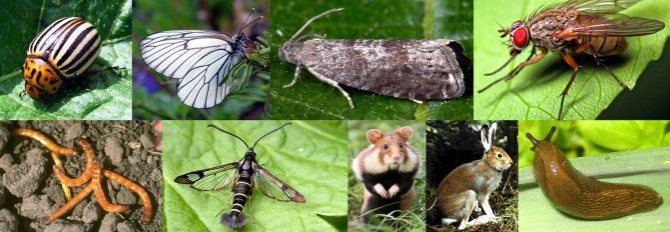

How to handle flowers


Aphids are very fond of roses, so most likely you have already fought with it. The sap of rosebuds and flowers is very attractive to pests. The soap solution will help with aphids and when processing roses, it will be extremely effective. A little ash can be added to improve the effect. Three liters of water, plus one hundred grams of grated household or baby soap, plus two hundred grams of wood ash - the ingredients needed for the solution. The solution should be infused within six hours. Usually, plants are treated with a solution in at least three approaches.
Helpful hints:
- For the complete disappearance of aphids, neutralize the black ants.
- Most often, aphids affect weak or overfed shoots.
- Use their natural enemies to fight the pest: birds and insects.
- Plant aromatic herbs - nettle, clover, mustard.
- Plant plants that attract aphids away from useful crops - begonia, mallow, viburnum.
Herbs that repel aphids and other harmful insects:
- Onion.
- Garlic.
- Chamomile.
- Kinza.
- Parsley.
- Sagebrush.
- Calendula.
Whitefly
It is a winged insect, usually not exceeding 3 mm in size. Its wings are covered with a white powdery coating. The larva of this pest has a yellowish color and red eyes. The transformation of the larva into an adult plant occurs in about 20 days. Whiteflies reproduce very quickly: the females' fertility can reach up to 280 pieces.
Harm inflicted
The whitefly settles on the underside of the leaf. Adult insects and their larvae suck the sap from the tissues of flowers, thereby causing first its wilting, and then the complete death of the leaves. In addition, the sticky secretions covering the surface of the leaves become a favorable environment for the development of all kinds of fungal diseases.
Control measures
Whitefly is a flying pest, which greatly complicates the situation. The following methods of dealing with it help well:
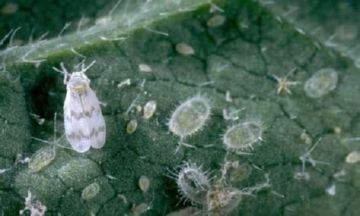

- In case of weak infestation, insects and their larvae can be collected by hand. This is best done on a cool morning, while the pests are inhibited.
- Adult insects can be caught by hanging sticky fly traps next to flowers. Also frightened insects can be easily collected with a vacuum cleaner.
- Since whiteflies love warmth and dryness, after picking insects with your hands, you can rinse the plant leaves with warm soapy water.
- The following method helps well: the plant must be packed in a transparent plastic bag, tying it at the base of the pot. Only beforehand it is necessary to moisten the plant well from the spray bottle.
- In case of severe damage, the plant is treated with insecticides: Fufanon, Decis, Actellik, Intavir.
Aphid solution: aphids on berries
If the aphid appears, then as a dictator, she will want to seize everything. You can tell separately about the processing of berry bushes. If insects have forged currants in the solution, you will need to add baking soda. Mix fifty grams of soap and a tablespoon of baking soda, then dissolve the mixture in one liter of warm water. The infusion should stand for six hours and then strain it. Plants are pollinated with all soap-containing solutions. As a rule, processing is carried out every two days for about fourteen days. If the aphid has not yet had time to breed strongly, you can carry out the procedure three times in seven days, then look at the plants. If the aphids have not returned for a week, everything is fine. It is necessary to repeat until the plant aphids completely leave.
When using home remedies, go around the area often enough, the aphids can fly and move without the participation of ants. Keep an eye on the plants and help them.
Effective recipes
Whatever the method of struggle, the main attention should be paid to the completeness and regularity of the treatments. Even in outdoor conditions, the laid eggs of aphids tolerate wintering well, and with the arrival of the first heat, a new round of destructive activity begins on the plants.
Diluted
To dilute ammonia for spraying from aphids, the following proportions and dosages are recommended in the main recipe:
- a bottle of 10% product with a volume of 40 ml;
- 10 liter bucket of water.
To fully wet the leaves of the plant, you can add two tablespoons of any detergent or laundry soap. After mixing all the components in a circular motion, you can start using the mixture to destroy parasites in the garden.
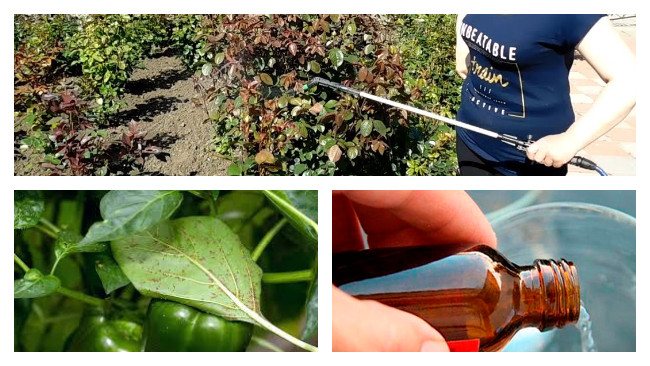

With soap
The ideal additive against aphids is tar soap.
It provides additional assistance for the quick elimination of pests in the garden. Many people use tar in soap to treat other conditions. Therefore, if there is an opportunity to purchase such a tool, it recommends using a solution to etch out aphids during processing.
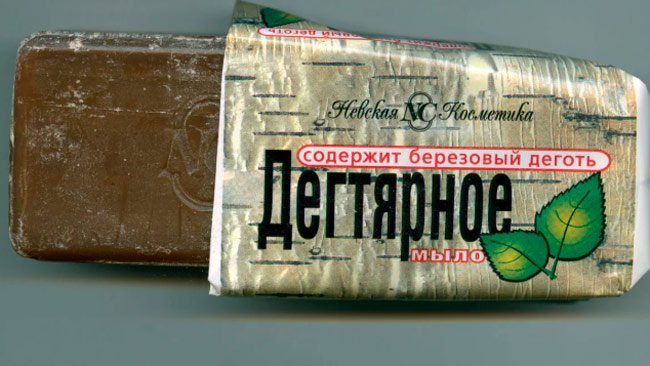

With garlic
Pungent additives with intense odors act in a similar way to ammonia solutions.
Almost all parts of the plant can be used to prepare the product:
- teeth;
- arrows;
- stems.
The longer the prepared mass is infused, the higher the concentration will be. It is simple to prepare the solution - just pour the pounded raw materials with cool water, mix and leave for three days. In the future, the cake is separated from the infusion and sent to storage in the refrigerator. There are no strict relations in this case.
On a note! The basic principle of using a garlic solution is the presence of a strong garlic smell.
If there is a clear scent on the plant, the product will work reliably against aphids and other parasites.


For strawberries
To protect crops from aphid infestations, get rid of an existing colony and feed strawberries, ammonia solutions are also used.
Unlike chemical insecticides, ammonia does not accumulate in berries and does not have a harmful effect even during the period of ovary formation.
During preparation of the product, it is recommended to add fatty acids, i.e. ordinary laundry soap, rubbed into fine shavings. It will create the thinnest film and ensure a longer action of the solution against aphids, preventing its premature volatilization.
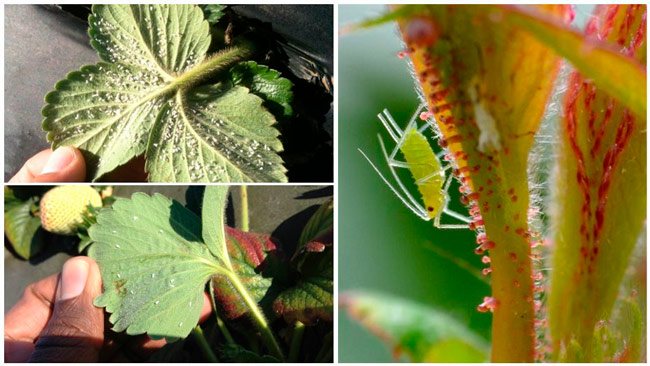

With washing powder
Powders for washing are quite suitable in cases where there will be no opportunity to buy laundry soap. To prepare the product, a very small amount is enough for a bucket of solution - about a tablespoon. Ripe fruits after such processing should be eaten after thorough rinsing with clean water.


For prevention
After the successful elimination of the aphid colony, it is imperative to monitor the condition of the plants. Having appeared once, the parasites can return again at any time. Therefore, preventive treatments against aphids will allow uninvited guests to be destroyed at the very initial stages of reproduction.
Read more effective aphid recipes in this article.
Carrot fly
Birch tar will help out in the fight against annoying
, which begins to conduct its subversive activities almost immediately after the emergence of shoots in the garden. For this purpose, the seedlings must be soaked in a tar solution a few hours before planting (1 teaspoon per 1 liter of water).


Birch tar will protect onions from onion flies
2 weeks after the emergence of shoots, spill the rows of onions with a solution prepared from 10 liters of water and 1 tbsp. fly in the ointment, repeating the procedure again after 12-15 days.
The specific smell of birch tar is also disliked by another fly - carrot. To keep her safe
and other crops of the Umbrella family, to which this pest is not indifferent, dissolve 2 teaspoons of tar in a bucket of water and water the plants under the root on a pre-moistened soil. During the season, 4 such root watering is carried out: 2 times in June and 2 times in August with an interval of 10-12 days.
The scent of tar will scare away the carrot fly from the carrot garden
Despite its name, the cabbage fly is not only harmful to
, but also to all other cultures of the Cruciferous family -
and others. Moreover, the fly itself is an absolutely harmless creature, but its larvae are a real thunderstorm for these vegetables.
"Tar" sawdust will help scare off the cabbage and butterflies of the whites, whose caterpillars are also not averse to feasting on delicious leaves. However, in this case, a rag soaked in pure birch tar will be a more effective method, which is hung on stakes in cabbage aisles at a height of 40-50 cm from the ground.
Caterpillars of Cabbage White
Fumigation is the path to health
Paradoxically, tobacco smoke, which is harmful to humans, benefits plants. And this is done as follows: a small fire is kindled in a metal can of canned food. As soon as the latter flames up properly, tobacco dust is poured into it. White smoke begins to pour out of the can.
With a can, from which a thick and rather fetid smoke is pouring, they bypass the site, thereby destroying the aphids.
The same method has been used by our ancestors since ancient times, saving trees from short-term frosts. Modern summer residents, exhausted by the intrigues of pests generated by NTP, have significantly expanded the "functionality" of the smoky method.
Interesting and effective methods such as sprinkling with essential oils with cream, washing with a suspension of sunflower oil with water, and many others. Selection of a method taking into account all the nuances of the situation will give the expected results.
Raspberry-strawberry weevil
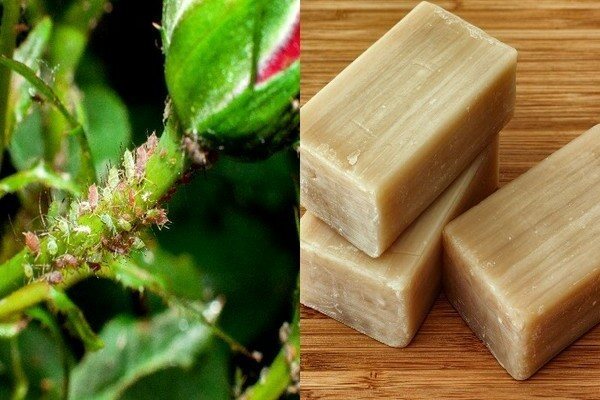

Blackened flowers and dried ovary on bushes
indicate the presence of the raspberry-strawberry weevil. To exclude such an unpleasant phenomenon, abundantly moisten the bushes with a tar solution (2 tablespoons and 30 g of soap per 10 liters of water), performing the procedure in the budding phase 2 times with an interval of 5-7 days.
A dried ovary with incised stalks indicates the presence of a weevil. Photo from the site umaine.edu
And do not forget that by scaring a weevil away from a strawberry plantation, you can do a disservice to raspberries, blackberries or rose hips, to which the beetle will spread. Therefore, before flowering, treat these berry crops a couple of times with this product.
We suggest you familiarize yourself with: Small brown bugs in the apartment - photos and names
If last season the cherry weevil caused significant damage to your garden, be sure to spend next spring for
and other stone fruit crops, tar aromatherapy, which will not harm you or the environment, but will reliably protect trees from this pest.
Birch tar will protect cherries and cherries from damage by cherry weevil
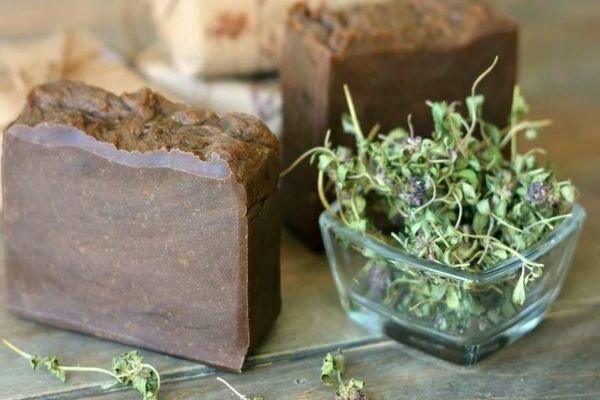

To do this, dissolve 1 tbsp in a bucket of water. a spoonful of birch tar and 1/3 of a bar of soap and thoroughly moisten the trees from the sprayer with such an odorous solution. The procedure should be carried out in early spring before bud break, repeat with bud break and shortly before flowering.
Moles
What to do with insect pests is clear. But summer residents have other garden enemies, for example,
... With their active underground activity, they cause significant damage to the health, and sometimes the life of garden plantations.
A mole is an uninvited guest in any garden
To drive these uninvited guests from the site, mix 1 cup of tar and 1/3 cup of vegetable oil and soak pieces of rags with such an emulsion. After that, excavate all the mole holes that you find on the site, put an odorous rag in each move and cover the holes with earth. After such "aromatherapy" the moles will quickly leave the occupied territory.


